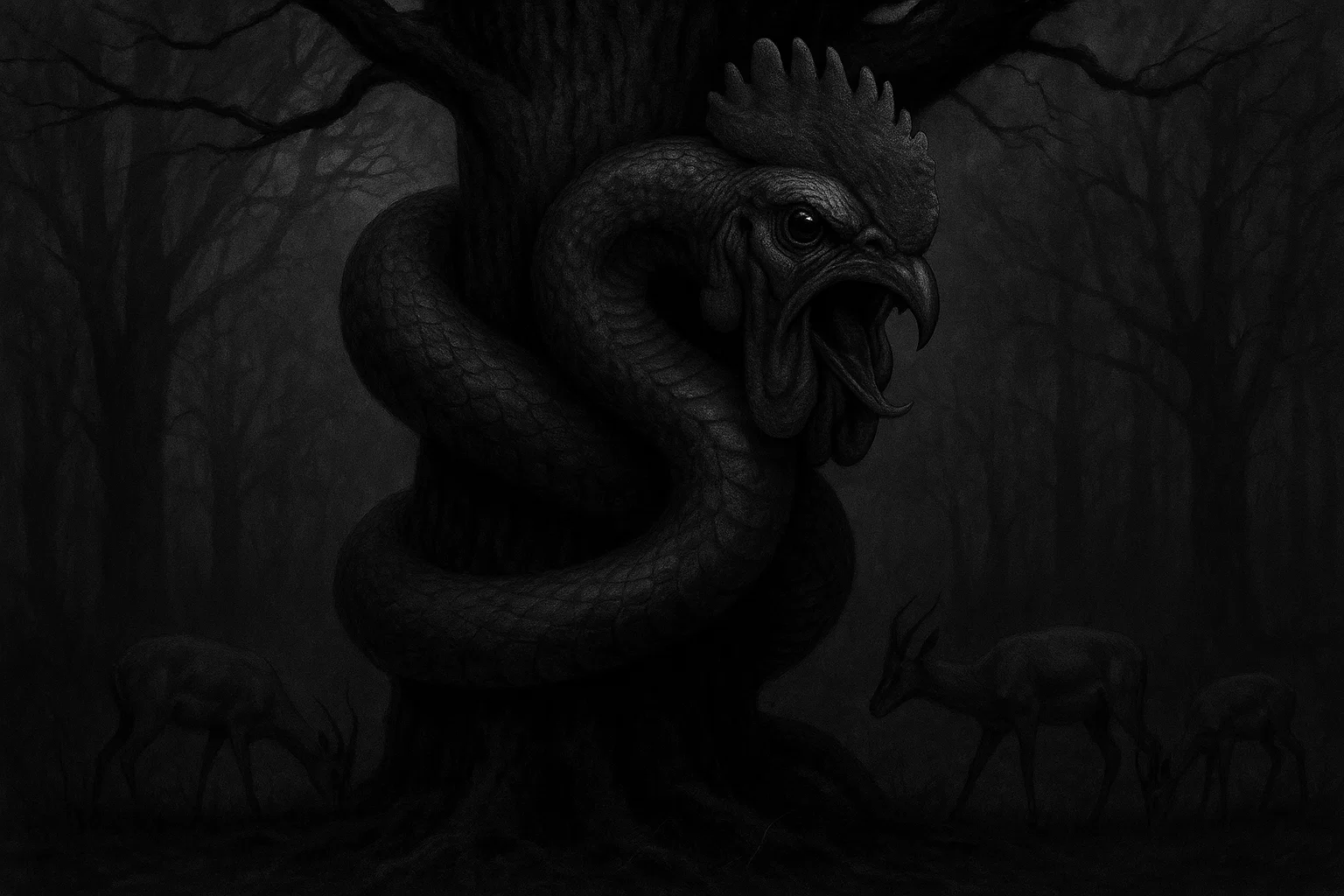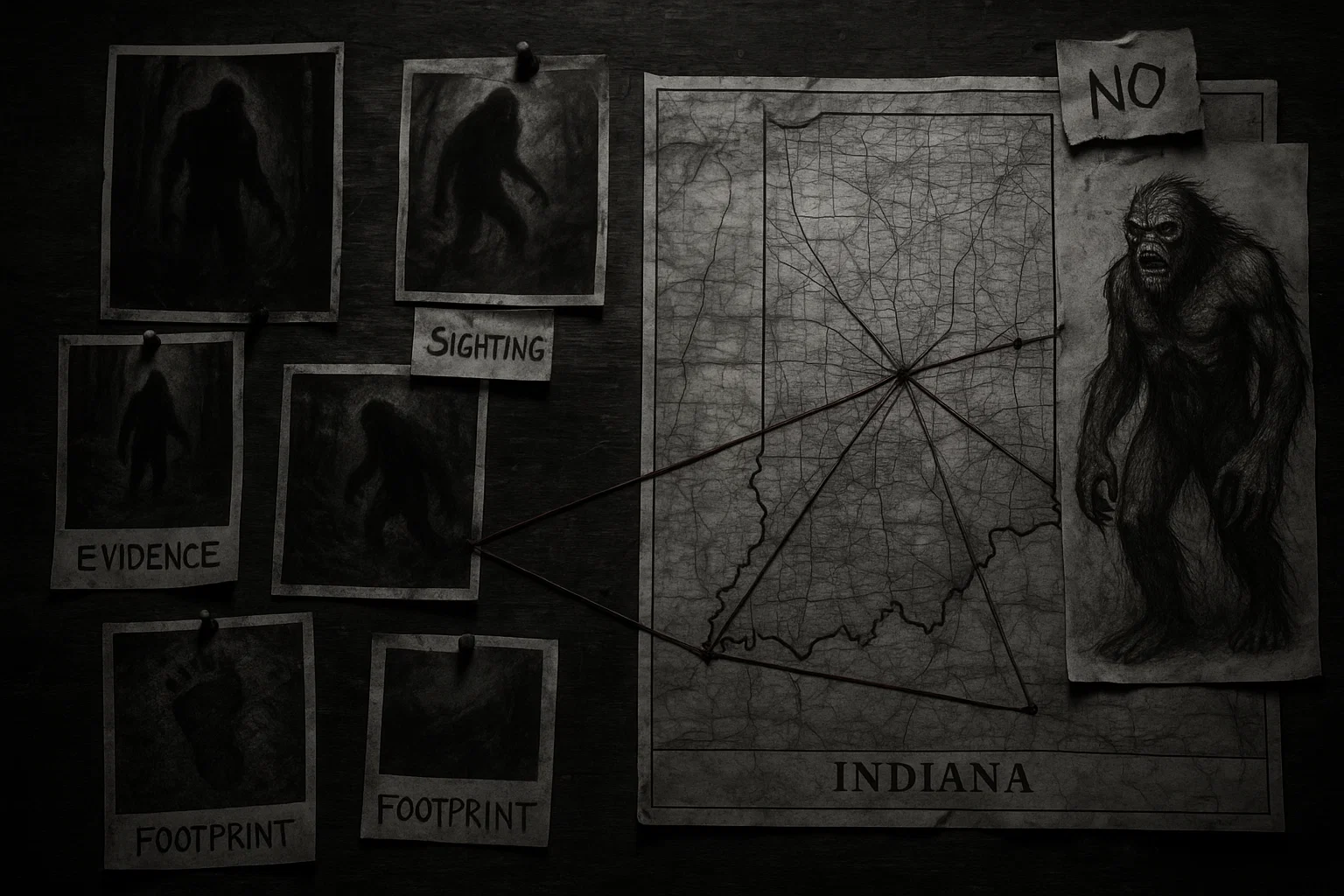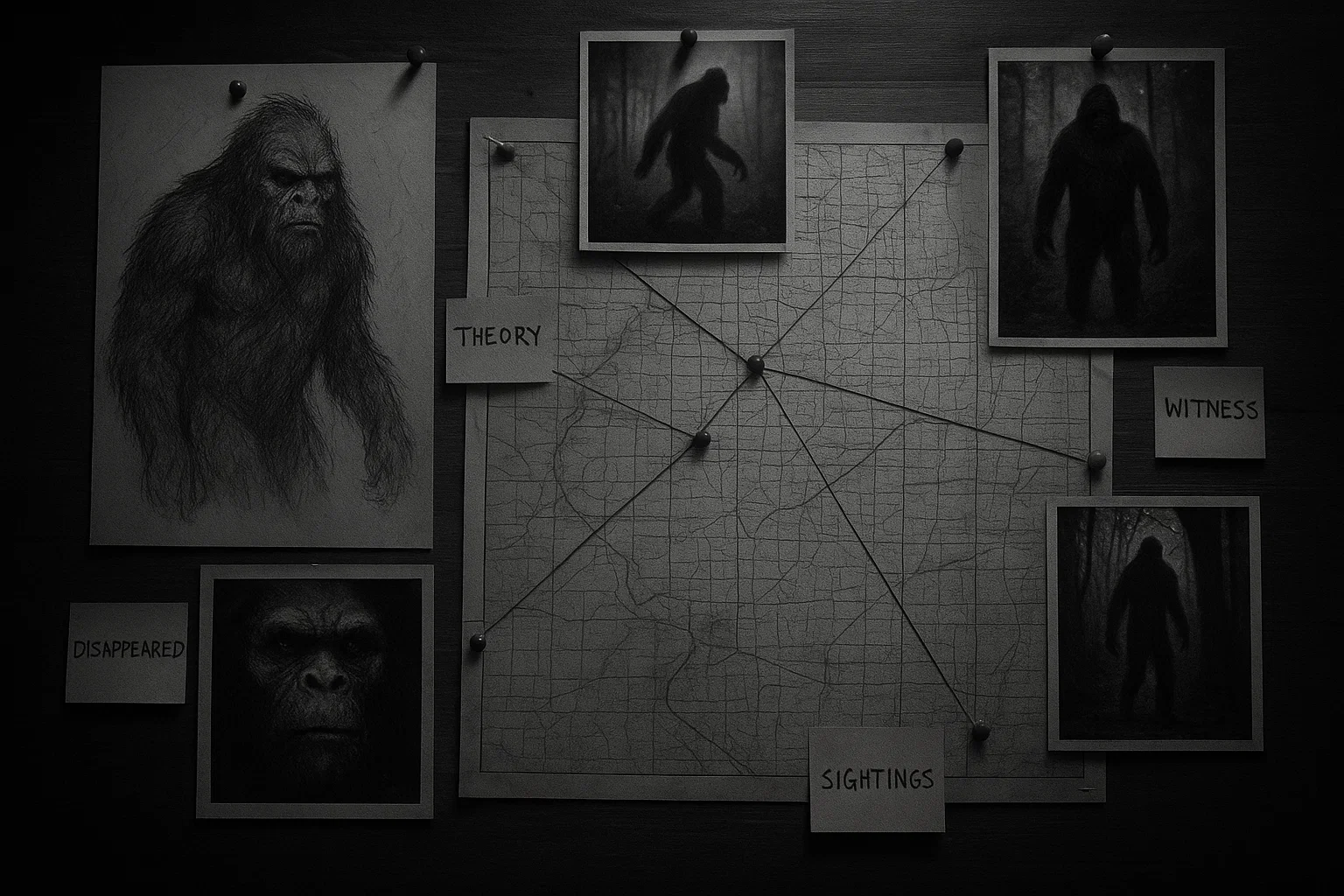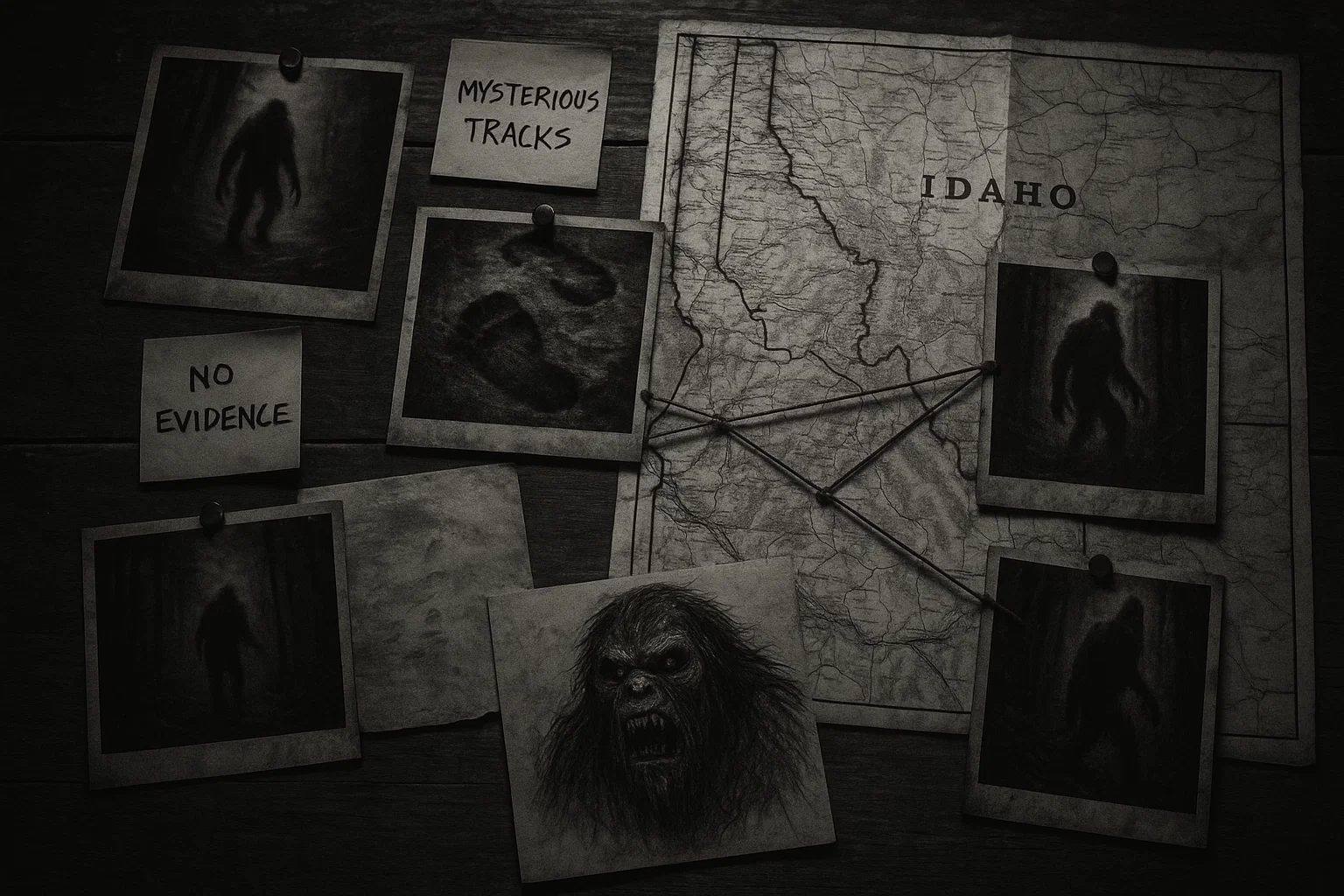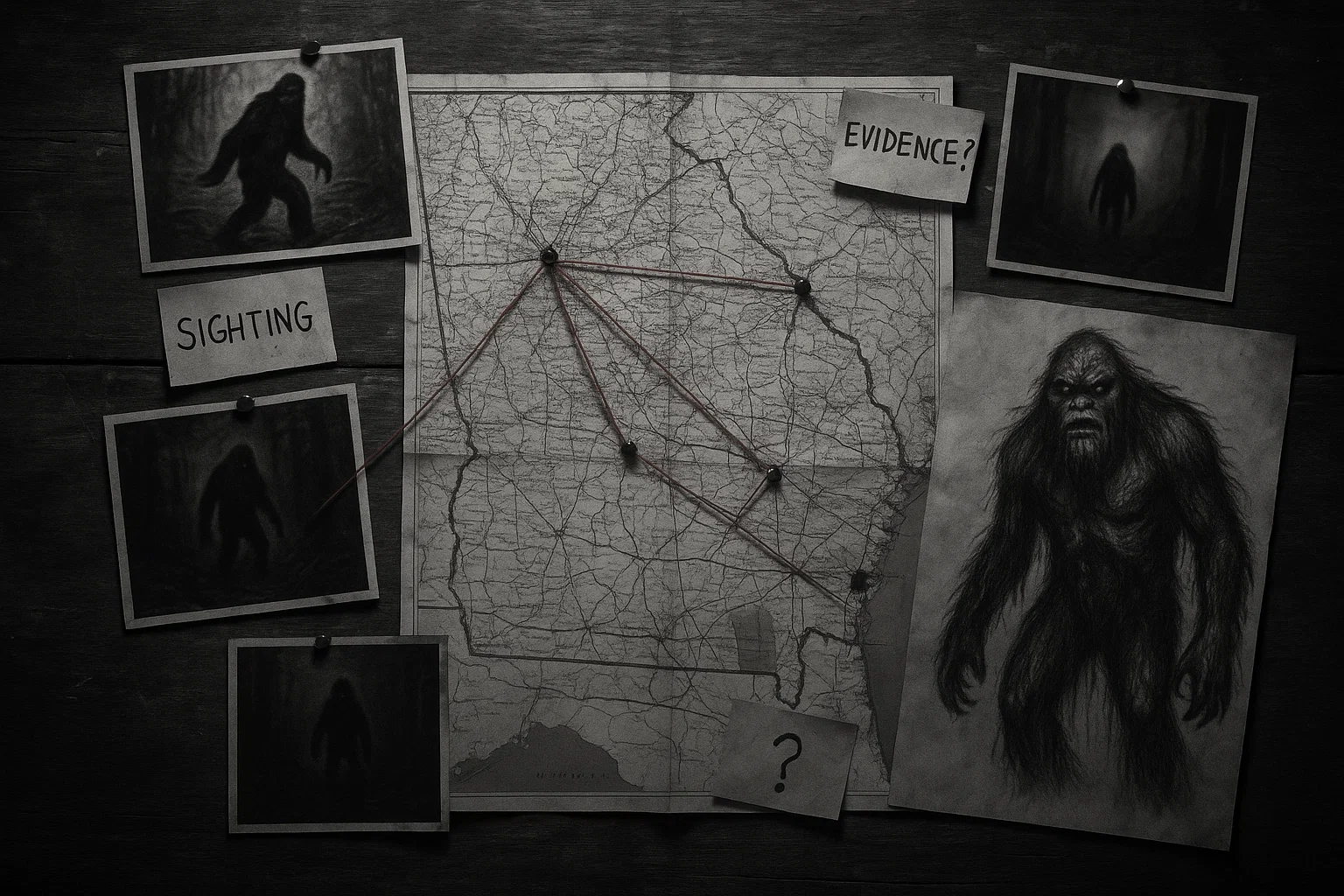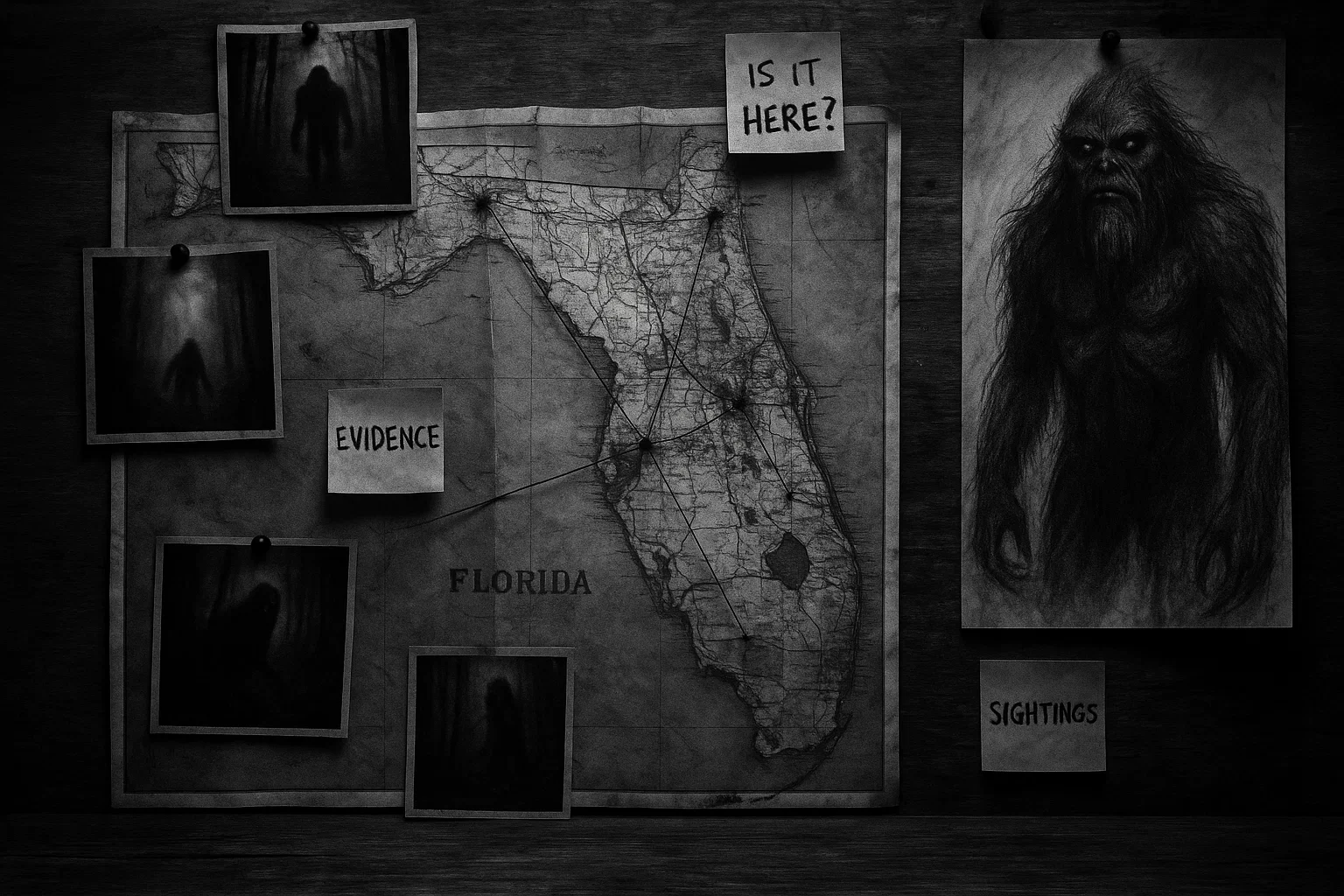Deep in the heart of Central and East Africa, tales of a creature both awe-inspiring and terrifying have echoed through generations. The Crowing Crested Cobra, a cryptid steeped in mystery, is no ordinary snake.
Said to possess a rooster-like crest, a venomous bite, and the chilling ability to crow like a rooster, this elusive serpent blurs the line between folklore and potential reality.
Reported across nations like Zambia, Zimbabwe, and Malawi, and even in distant regions like the Caribbean and China, this creature has sparked curiosity among cryptozoologists, adventurers, and locals alike.
Could it be an undiscovered species, a misidentified animal, or a product of cultural mythology?
Table of Contents
What Is the Crowing Crested Cobra?
The Crowing Crested Cobra is a cryptid snake, a creature whose existence remains unproven by mainstream science yet is deeply rooted in African oral traditions and anecdotal reports.
Known by local names such as Bubu, Inkhomi (“the killer”), Songo (“strikes down at the head”), and Mwikoma, this serpent is feared for its deadly venom, enormous size, and supernatural traits.
Unlike typical snakes, it is said to produce cockerel-like vocalizations, including crowing in males and clucking in females, earning comparisons to the mythical cockatrice or basilisk, creatures known for their deadly gaze or breath.
In African mythology, the snake is often linked to sorcery and witchcraft, with its parts—such as scales or venom—believed to hold curative powers or be used in ritualistic practices. Some accounts describe it as a guardian of sacred places, embodying the mysteries of the natural world.
The creature’s lore spans Central and East Africa, with reports concentrated in Zambia, Zimbabwe, Malawi, Mozambique, Tanzania, and the Central African Republic. Beyond Africa, similar creatures appear in Caribbean folklore (Jamaica and Santo Domingo) under names like Brou serpent, and in China as the jiguanshe.
In Polynesia, a crowing snake called vivimi gata lacks the crest but shares vocal traits, suggesting a global fascination with serpentine cryptids.
The Crowing Crested Cobra is often described as arboreal, living in treetops or rocky outcrops, and is said to be highly territorial, striking with precision from above.
Its legend has persisted for centuries, blending indigenous beliefs, explorer accounts, and cryptozoological speculation, making it a cornerstone of unexplained phenomena in folklore.
What Does the Crowing Crested Cobra Look Like?
The Crowing Crested Cobra is a striking creature in both size and appearance. Reports describe it as reaching lengths of up to 20 feet (6 meters), rivaling the green anaconda as one of the world’s largest snakes.
Its body is typically buff-brown, grayish-black, or dark brown, with a scarlet face that stands out vividly against its scales. The most iconic feature is the bright red crest, resembling a rooster’s comb, which is more pronounced in males and often accompanied by red facial wattles, giving it an avian-like appearance.
Unlike typical cobras, it lacks a hood, and its head is small but robust, with denser skull bones than those of known snake species, according to some accounts.
The snake’s vocalizations are its most peculiar trait. Males reportedly emit a rooster-like crow, while females produce a hen-like cluck, described as “te te te te.” Both sexes are said to issue a rapid warning sound, “chu-chu-chu-chu,” before striking.
Some witnesses claim it emits a foul odor, possibly as a defense mechanism, and its venom is rumored to be potent enough to kill within seconds.
Certain accounts attribute supernatural abilities, such as spitting venom over long distances or even killing with a glance, though these traits align more with mythological creatures like the basilisk. The snake’s arboreal nature allows it to perch in trees, striking downward with precision, adding to its fearsome reputation as a predator in the wild.
You May Also Like: Vassago: The Demon Who Pretends to Be an Angel
Habitat
The Crowing Crested Cobra is primarily reported in the lush forests, rocky hillocks, and riverine areas of Central and East Africa, spanning from the lower Zambezi River in Mozambique to Lake Tanganyika in the west and the Indian Ocean coast in the east.
This vast region includes Zambia, Zimbabwe, Malawi, Tanzania, Mozambique, and the Central African Republic. The terrain varies from dense tropical forests to savanna woodlands and rocky outcrops, providing ample cover for an elusive creature.
The snake is said to favor arboreal habitats, resting on tree branches or in rocky crevices, where it can ambush prey like rock hyraxes or small mammals. Its preference for elevated perches aligns with its reported behavior of striking downward, using the terrain to its advantage.
The Congo Basin, a hotspot for cryptid lore, is often linked to the Crowing Crested Cobra due to its biodiverse ecosystem and remote, unexplored regions. This area is also associated with other cryptids, such as the Mokele-Mbembe, a sauropod-like creature, and the Emela-Ntouka, a horned, aquatic beast, suggesting a cultural fascination with mysterious creatures in these dense jungles.
Local legends in Zambia and Malawi speak of sacred groves and haunted rivers where the snake is said to guard spiritual sites, reinforcing its role in African spirituality.
The Zambezi River region, with its history of unexplained phenomena, including sightings of strange lights and phantom animals, adds to the mystique. For example, the Barotse Valley in Zambia is known for tales of crowing snakes and shape-shifting spirits, possibly tied to the cobra’s legend.
The Congo Basin has a long history of paranormal activity, with indigenous tribes like the Baka and Bantu recounting stories of supernatural entities and cursed forests. These tales often intertwine with the Crowing Crested Cobra, portraying it as a guardian spirit or a manifestation of ancestral wrath.
The region’s dense vegetation, swampy rivers, and limited human settlement make it an ideal habitat for an elusive creature, while its cultural significance as a place of mystery fuels speculation about undiscovered species.
The Central African Republic’s Dzanga-Sangha Reserve, another reported habitat, is known for rare species like the forest elephant, suggesting the possibility of unknown fauna surviving in these remote areas.
Crowing Crested Cobra Sightings
The Crowing Crested Cobra has been the subject of numerous sightings, ranging from historical explorer accounts to modern-day reports:
| Date | Location | Witness | Description |
|---|---|---|---|
| 1860s | Lower Zambezi River, Mozambique | David Livingstone | 12-foot snake, dark with dirty blue belly, red wattles; killed a young girl. |
| March 17, 1881 | Lake Nyasa, Nyasaland (Malawi) | Chauncy Maples | 12-foot crested mamba with red crest, crowing; seen in a tree. |
| 1910 | Southern Africa | Walter Rose | Referenced a turkey-like snake in Reptiles and Amphibians of Southern Africa. |
| 1920s | Lake Tanganyika, Tanganyika | Villager (via Nash) | Black snake with cock’s comb; killed witness’s father in a forest. |
| 1944 | Nyasaland (Malawi) | John Owen Shircore | 18–20-foot snake, buff-colored, red crest, skeletal remains found; crowing. |
| May 10, 1959 | Lake Kariba, Zimbabwe | John Knott | 7-foot black snake with red crest of five spikes; run over by car. |
| 2019 | Luangwa Valley, Zambia | Unverified villagers | Dark brown snake with red crest, crowing, foul odor; seen near riverbank. |
David Livingstone’s Encounter (1860s)
In the 1860s, Scottish explorer David Livingstone (1813–1873) documented a chilling encounter in Mozambique’s lower Zambezi River region.
In his journals, published posthumously in 1874 as The Last Journals of David Livingstone, he described a snake called Bubu, measuring approximately 12 feet long with a dark body, dirty blue belly, and red markings resembling rooster wattles on its head. Livingstone recounted a tragic incident where a young girl was bitten and killed by the snake, which then fled into a hole.
His servant, Abdullah Susi, corroborated the account, noting the snake’s crest-like markings and its reputation among locals as a venomous killer. This sighting, one of the earliest recorded, cemented the creature’s fearsome reputation in African folklore.
You May Also Like: The Hands Resist Him: Creepiest Painting on the Internet?
Chauncy Maples’ Sighting (1881)
On March 17, 1881, Anglican bishop Chauncy Maples (1852–1895) wrote about a crested mamba in Nyasaland (modern-day Malawi). In a letter published posthumously in 1897, Maples described a 12-foot-long snake with a distinctive red crest and crowing vocalizations.
Encountered near Lake Nyasa, the snake was spotted in a tree, its crest glowing in the sunlight. Maples noted that locals called it Mwikoma and believed it possessed supernatural powers, often associating it with witchcraft.
The sighting occurred during a missionary journey, and Maples’ detailed description added credibility to the creature’s legend among European explorers.
Thomas Nash’s Account (1920s)
In the 1920s, Thomas Nash, a colonial administrator in Tanganyika (now Tanzania), recorded a villager’s story about a crowing snake with a cock’s comb.
The villager claimed the snake had killed his father in a forested area near Lake Tanganyika. The creature, described as black with a red crest, was said to have crowed before striking, leaving the villager traumatized. Nash’s account, though secondhand, highlighted the snake’s place in oral traditions and its association with sudden, deadly attacks.
The sighting took place in a dense forest, reinforcing the creature’s arboreal nature.
John Owen Shircore’s Findings (1944)
In 1944, colonial physician John Owen Shircore (1882–1953) provided one of the most detailed accounts of the Crowing Crested Cobra in Nyasaland (Malawi).
Published in African Affairs, Shircore claimed to have collected skeletal remains, including a bony comb, five lumbar vertebrae, and a large dorsal vertebra (22 mm by 16 mm) from a snake estimated at 18–20 feet long. He described it as buff-colored with a red crest and capable of crowing and clucking.
Shircore’s 35 years of research in the region included interviews with locals who revered the snake as a spiritual entity, often leaving offerings to appease it. His findings, though unverified, remain a cornerstone of the creature’s lore.
John Knott’s Roadside Encounter (May 1959)
On May 10, 1959, John Knott, a settler in Lake Kariba, Zimbabwe, reported a startling encounter while driving. According to his account in African Wild Life, Knott accidentally ran over a 7-foot-long snake that was jet-black with a red crest featuring five internal struts.
The snake was crossing a dirt road near the lake when Knott’s vehicle struck it. Intrigued, he examined the body, noting the crest’s unique structure and the snake’s robust form.
Knott’s detailed observation, though lacking physical evidence, added a modern perspective to the cryptid’s legend, suggesting a tangible creature rather than pure myth.
You May Also Like: The Cursed Phone Numbers | Horror Story
Unverified Modern Report (2019)
In 2019, unverified reports surfaced from Zambia’s Luangwa Valley, where villagers claimed to have heard crowing sounds from a large snake in a forested area.
Described as dark brown with a red crest, the snake was spotted near a riverbank, allegedly emitting a foul odor before vanishing into the undergrowth. While lacking specific witnesses or dates, the report aligns with historical accounts and suggests the legend’s persistence in modern times.
The Luangwa Valley, known for its wildlife and remote terrain, remains a hotspot for cryptid sightings.
Evidence, Investigations, and Theories
The Crowing Crested Cobra’s existence hinges on anecdotal evidence, unverified remains, and cultural narratives, with no conclusive proof to satisfy scientific scrutiny.
Physical Evidence
Shircore’s Skeletal Remains (1944)
- John Owen Shircore claimed to possess a lanceolate bone plate, five lumbar vertebrae, and a large dorsal vertebra from a snake estimated at 18–20 feet long. He described a bony comb with skin fragments, suggesting a crest. However, these remains were never independently verified, and their current whereabouts are unknown, casting doubt on their authenticity.
Knott’s Encounter (1959)
- John Knott’s detailed description of a 7-foot snake with a red crest provided a tangible account, but the lack of a preserved specimen or photographs limits its evidential value. The crest’s five struts suggest a unique morphology, but no physical evidence was collected.
Local Artifacts
- In Zambia and Malawi, locals claim to possess snake scales or bones attributed to the Crowing Crested Cobra, used in ritualistic practices. These artifacts are often kept secret due to their spiritual significance, making scientific analysis difficult.
Scientific Investigations
Shircore’s Research (1944)
- Shircore’s 35-year study in Nyasaland included interviews with locals and alleged skeletal evidence. His work, published in African Affairs, suggested a distinct species but lacked peer review, diminishing its scientific credibility.
Herpetological Analysis
- Herpetologists like Steven Spawls (1979) and Donald G. Broadley argue that the Crowing Crested Cobra is likely a misidentified Black Mamba (Dendroaspis polylepis), a highly venomous, arboreal snake reaching up to 14 feet. Broadley noted that ecdysis (skin shedding) can leave skin fragments on a snake’s head, resembling a crest.
Charles Pitman’s Observations
- Game warden Charles Pitman proposed that the Crowing Crested Cobra is a composite of multiple snakes, including the Gabon viper (Bitis gabonica) and rhinoceros viper (Bitis nasicornis), both venomous and occasionally described as crested. Pitman’s research in the Barotse Valley highlighted local beliefs attributing crowing to Black Mambas.
You May Also Like: El Silbón: Why Locals Say Its Whistle Means Death Is Near
Theories
Undiscovered Species
- Likelihood: Low but possible.
- Cryptozoologists like Karl Shuker argue that the Crowing Crested Cobra could be a rare, undiscovered snake with unique vocalization abilities. The Congo Basin’s biodiversity and unexplored regions support the possibility of unknown species. However, the lack of verified specimens and the improbability of a snake producing avian-like sounds weaken this theory. The crest and wattles could indicate a novel adaptation, but no known reptiles exhibit such traits.
Misidentification of Known Snakes
- Likelihood: High.
- The Black Mamba is a strong candidate for misidentification. Its large size, arboreal habits, and aggressive behavior align with reports. During ecdysis, loose skin on the head can mimic a crest, and optical illusions may exaggerate features. The rhinoceros viper, with its horn-like scales, could also contribute to the crest description. This theory fits the physical descriptions but struggles to explain the crowing sounds.
Vocalizations from Other Animals
- Likelihood: Moderate.
- The crowing and clucking may stem from birds like the buff-spotted flufftail (Sarothrura elegans), common in Central African forests, whose calls resemble rooster crows. Witnesses may attribute these sounds to a snake seen nearby, especially in dense, low-visibility environments. This theory explains the vocalizations but not the consistent reports of a crested snake.
Cultural and Mythological Influences
- Likelihood: High.
- The Crowing Crested Cobra may be a cultural amalgamation, blending fear of venomous snakes with myths like the cockatrice or basilisk. In African folklore, snakes are often tied to sorcery and spiritual guardianship, enhancing their mystique. The crest and crowing could be symbolic exaggerations, reflecting cultural reverence for snakes. This theory accounts for the supernatural elements and widespread belief but dismisses physical sightings as folklore.
Composite Creature
- Likelihood: Moderate.
- Bernard Heuvelmans and Charles Pitman suggested the creature is a composite of multiple snakes, combining traits of the Black Mamba, Gabon viper, and rhinoceros viper. The crowing may result from misattributed animal sounds, while the crest could stem from shedding anomalies or horn-like scales. This theory balances cultural and biological explanations but lacks definitive evidence.
Most Likely Theory: The misidentification of known snakes, particularly the Black Mamba, combined with cultural influences, is the most plausible explanation. The Black Mamba’s size, behavior, and shedding patterns align with many sightings, while the crowing sounds likely stem from nearby birds or cultural embellishments. The Congo Basin’s dense, unexplored terrain and rich folklore amplify these misinterpretations, creating a compelling but unproven legend.
You May Also Like: Does the Ninki Nanka Really Exist? Sightings & Theories
Comparison with Other Similar Cryptids
The Crowing Crested Cobra shares traits with other cryptids and mythical creatures, particularly those with serpentine forms or avian characteristics:
| Cryptid | Appearance | Habitat |
|---|---|---|
| Cockatrice | Serpent with rooster’s head | Mythical |
| Basilisk | Serpent with deadly gaze | Deserts/jungles |
| Feathered Serpent | Serpent with feathers | Mythical |
| Mngwa | Spotted cat-like, snake-like traits | Tanzania |
| Olgoi-Khorkhoi | Red, worm-like, poison-spitting | Gobi Desert |
| Sasabonsam | Bat-winged, tree-dwelling | West Africa |
| Emela-Ntouka | Horned, aquatic, reptilian | Congo Basin |
| Kongamato | Pterosaur-like, red wings | Zambia, Congo |
Is the Crowing Crested Cobra Real?
The Crowing Crested Cobra remains a captivating enigma in the realm of cryptozoology. Its vivid descriptions—a 20-foot serpent with a red crest, crowing vocalizations, and deadly venom—paint a picture of a creature that defies biological norms.
Yet, the absence of verified specimens, photographic evidence, or DNA samples casts significant doubt on its existence. The most compelling evidence, such as John Owen Shircore’s skeletal remains, lacks scientific validation, while eyewitness accounts from David Livingstone to John Knott are consistent but anecdotal.
The most likely explanation is a combination of misidentified Black Mambas, whose shedding skin can mimic a crest, and cultural folklore amplifying fear of snakes with traits borrowed from the cockatrice or basilisk.
The buff-spotted flufftail’s calls likely contribute to the crowing myth, especially in dense forests where visibility is low. However, the Congo Basin’s vast, unexplored wilderness and history of undiscovered species—like the okapi until 1901—leave room for speculation.
Could a rare snake with unique adaptations still lurk in these remote regions? Until conclusive evidence emerges, the Crowing Crested Cobra remains a powerful symbol of Africa’s mysteries, blending folklore, fear, and the allure of the unknown.

